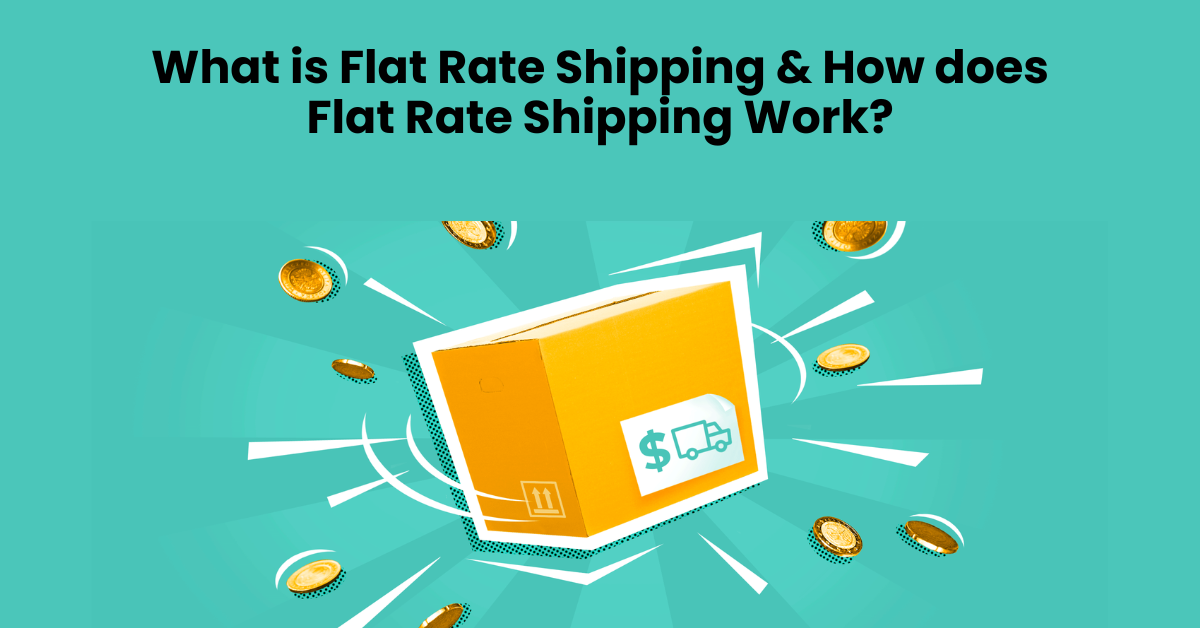What is Flat Rate Shipping & How does Flat Rate Shipping Work?

Flat rate shipping is a concept that's revolutionizing how businesses and customers think about shipping costs. But what exactly is it, and how does it work? This blog delves into the world of flat rate shipping, a straightforward pricing strategy that can simplify shipping logistics for both sellers and buyers. It's a method where a single fixed rate is charged for shipping a package, regardless of weight or size, within certain limits. Ideal for businesses of all sizes, this blog aims to explain how flat rate shipping could be the key to streamlining your shipping process and potentially saving costs. Dive in to understand its mechanism and how it could benefit your business or personal shipping needs.
What is Flat Rate Shipping?
Flat rate shipping is a shipping method where a single predetermined fee is charged for the delivery of packages, regardless of weight, size, or distance. This standardized approach simplifies the shipping process for both the sender and the receiver. It's particularly beneficial for items that are heavy or bulky, as it can often be more cost-effective than standard shipping rates based on weight or dimensions. Flat rate shipping is widely used by postal services and private courier companies, offering a predictable and often economical option for shipping goods.
Shipping Carriers: Comparing Prices, Services, and Reliability
FOB Shipping Point: What It Means and How It Affects Your Business
How does Flat-rate Shipping work?

Flat-rate shipping operates under a simple yet effective premise. Here's how it generally works:
- Uniform Cost: A single fixed rate is charged for shipping, irrespective of the package's weight, size, or distance (within certain limits).
- Predefined Packages: Carriers often offer predefined box sizes for flat-rate shipping, simplifying packaging choices.
- Shipping Zones Irrelevant: Unlike variable pricing, flat-rate shipping doesn't change cost based on shipping zones or distance within the country.
- Ease of Budgeting: Businesses can easily calculate shipping costs without complex calculations for each package.
- Attractive to Customers: A predictable shipping rate can be more appealing to customers, making budgeting for purchases easier.
- Speed and Convenience: Often includes expedited shipping options, providing a balance of speed and cost efficiency.
- Ideal for Certain Products: Particularly beneficial for shipping small, dense, or heavy items that would otherwise be costly to ship.
Economy vs Flat Shipping
Economy Shipping:
- Generally the cheapest option.
- Slower delivery times.
- Cost varies based on distance, weight, and size.
- Suitable for non-urgent, lightweight items.
Flat Rate Shipping:
- One fixed price for all shipments of similar size.
- Faster than economy shipping.
- Cost is consistent, regardless of distance or package weight (within limits).
- Ideal for heavier, bulkier items or when fast delivery is needed.
Free Shipping vs Standard Shipping

- Cost to Customer:
- Free Shipping: No charge to the customer.
- Standard Shipping: Customer pays a shipping fee based on weight, size, or distance.
- Impact on Sales:
- Free Shipping: Often increases sales; customers are attracted to 'free' offers.
- Standard Shipping: Standard costs may lead to abandoned carts if costs are perceived as too high.
- Speed of Delivery:
- Free Shipping: Can be slower, as businesses might use economical shipping options.
- Standard Shipping: Often faster options available at extra cost.
- Business Cost:
- Free Shipping: Cost absorbed by the business; can be offset by higher product prices.
- Standard Shipping: Paid by the customer, reducing direct costs for the business.
- Customer Expectation:
- Free Shipping: Attracts customers but might raise expectations for other services.
- Standard Shipping: Clear costs can set realistic expectations about delivery times.
Conclusion
In conclusion, flat rate shipping presents a straightforward and predictable option for both businesses and customers. It simplifies the shipping process, offering a fixed cost for packages within certain size and weight limits. This method can be particularly advantageous for businesses handling products that are consistently sized or weighted. For customers, the transparency and consistency of flat rate shipping costs can enhance the shopping experience, potentially increasing customer satisfaction and loyalty. Understanding how flat rate shipping works is crucial for businesses looking to optimize their shipping strategies and for customers seeking the best shipping options.
FAQs
Here are some frequently asked questions related to Flat rate shipping:
Which flat-rate shipping service is right for me?
Choosing the right flat-rate shipping service depends on your specific needs. Consider the size and weight of your products, shipping volume, and your budget. Research various carriers like USPS, FedEx, or UPS, as each offers different flat-rate options with varying box sizes and delivery times. Select the service that aligns best with your business requirements and customer expectations.
Is flat rate shipping faster?
Flat rate shipping speed varies and is not necessarily faster than other shipping options. The speed often depends on the carrier's standard shipping time frames. While it provides a cost-effective solution, the focus with flat rate shipping is more on uniform pricing rather than expedited delivery.
How long does flat rate shipping take?
The delivery time for flat rate shipping typically varies depending on the carrier, but it generally ranges from 1 to 3 business days for domestic shipments. Some carriers may offer options for expedited flat rate shipping at an additional cost, which can reduce the delivery time. International flat rate shipping times can be longer, depending on the destination country and customs processes.

.png)
